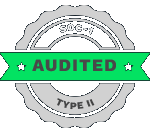Laptop on the table showing data and codes on the screen by Negative Space
Did you know that there was a widespread belief within many firms that IT did not significantly contribute to the organizational value and did not properly support the needs and objectives of the business? However, the ITIL process has significantly changed this perception.
Businesses can now improve customer relationships, manage risk, and create an IT environment that is prepared for progression, scalability, and transformation with the support of the Information technology infrastructure library (ITIL). In this blog, we will help you gather clarity on the key concepts and stages of the ITIL process.
Table of Contents:
What Is ITIL (Information Technology Infrastructure Library)?
ITIL is a comprehensive collection of best-practice formalized procedures for offering IT services to clients. By harmonizing IT resources with business requirements, the main goal is to maximize value for the business.
-
There was a time when poor coordination and communication existed between the IT departments and the businesses. Several companies lacked established procedures for making service requests or reporting IT incidents.
-
The fundamental tenet of the ITIL process is that value is offered in the form of IT services that are linked with business needs.
Here’s what you should know about this framework
-
The ITIL service management processes include exhaustive process flows, success factors, descriptions, metrics, and implementation assistance that firms can adapt to work to fit their context.
-
The ITIL framework may assist businesses in launching and enhancing their entire capabilities for IT Service Management. It also aids in magnifying alignment with the organization and expanding and upholding value to the company.
-
The ITIL framework does not specify how much or even how to use it. It gives the businesses the freedom to implement these processes as and when essential to meet their unique needs. The elements that are most crucial to an organization’s needs are assessed and put into practice.
According to Statista, the market for IT service management software worldwide in 2016 was estimated to be worth US$ 1.9 billion. We have come a long way since. Several businesses spend on software development services today that offer a greater level of customization and lower maintenance costs and scalable IT architectures.
Let’s look at how ITIL has progressed over the years, and understand the core pillars, five stages of the ITIL process, and the classifiable benefits.
ITIL Service Management: The Evolutionary Journey
To increase the caliber of IT services while reducing expenses for the government, the UK Cabinet Office launched ITIL in the 1980s.
Beginning with ITIL v1, which was embraced by businesses all around the world in the 1990s, the ITIL process has changed over time. By 2000, ITIL had gained acceptance and served as the inspiration for Microsoft Operations Framework (MOF).
Let’s briefly take you through these versions
ITIL v1
The objective of ITIL in 1989 was to harmonize IT service management (ITSM). This original iteration assisted administrators in beginning to consider best practices while providing companies with an outline of ways to simplify services.
ITIL v2
ITIL v2 gave administrators a more adaptable and standard framework for service delivery and support, as well as concrete procedures that businesses could use.
ITIL v3
ITIL v3 certification introduced guidelines for service strategy, transition, operation, and design.
-
It provided a more comprehensive view of IT services.
-
It also delivered advice on how companies can keep enhancing their offerings.
The phases and procedures of ITIL v3 are still relevant and frequently utilized.
ITIL v4
The greatest update to the framework since the publication of ITIL v3 in 2007 was announced by Axelos in 2018 with the release of ITIL 4.
-
ITIL 4, which began to be released in Q1 2019, delivers an improved version of ITIL that is more agile, adaptable, and custom-built for modern enterprises.
-
The most recent edition promotes fewer silos, increased cooperation, business-wide communication, and the incorporation of agile and DevOps into ITSM strategy.
-
Compared to ITIL v3, the framework contains a few significant modifications, but the removal of the service lifecycle was the biggest one. Additionally, ITIL 4 shifts the emphasis from service delivery to value generation.
Core Elements Of Information Technology Infrastructure Library
Through all the upgrades and iterations, there are at least 3 fundamental foundations that have stayed constant. These key concepts include:
ITIL Change Management
This core tenet of ITIL involves striking a balance between the demand for speed and the management of the inherent risks involved.
Scheduled, routine, emergency, and large changes are all handled through the ITIL change management process. Before executing any new or planned change, ITIL change management also specifies precise responsibilities and procedures.
ITIL Incident Management
An incident is defined as a problem that can be negatively impacted by your organization’s technology not functioning as it should. It then can critically affect one or more workers, clients, third parties, business processes or services, or other entities.
By getting the user back up and running as quickly as feasible, ITIL Incident Management seeks to minimize downtime brought on by such events and incidents
ITIL Problem Management
According to Axelos, a problem is a cause or possible cause of one or more incidents. The study of incident logs and other ITSM data is usually how problems are found.
ITIL problem management aids IT organizations in both incident prevention and the mitigation of unavoidable incidents’ effects.
The Service Lifecycle: 5 Stages of the ITIL Process
The ITIL v3, which is based on the idea of 5 phases of the service lifecycle, is still widely used in many ITSM applications today.
The five stages of the ITIL process function seamlessly to facilitate more uniform delivery and uninterrupted communication between professional services and IT. The five stages include
Service Strategy
Service Strategy Operations certify that services, including responding to user requests, addressing service failures, resolving problems, and performing routine operational activities effectually and competently.
This stage enables firms to plan and establish business objectives to satisfy client demands and needs.
Service Design
The design of service management technology, processes, products, functions, and infrastructure is a part of this lifecycle phase. The delivery of agreed-upon services at the specified time, cost, and location is the end goal of this phase.
Service Transition
This stage commences with the analysis of the risk and effect associated with any change. It also incorporates ITIL configuration management where the objective is to retain data on configuration components and their interactions necessary for IT service delivery operations.
Maintaining present functionality while implementing new structural changes with the least amount of risk is the key goal of transition planning and assistance.
Service Operation
The service operation stage aims to focus on achieving the expectations of the end-users while discerning any probable glitches and balancing expenses.
This phase helps establishments to satisfy the requirements of their customers and employees by keeping a check on the infrastructure and application-related services.
Continual Service Improvement
The quality monitoring of continuous service improvement assures that enhancement is the absolute result at every stage of the lifecycle. Additionally, this falls under service continuity management.
Benefits of ITIL processes
Let’s list a few distinguishable benefits of the ITIL process that will help you understand how it can transform your business.
-
Improved coordination and alignment between IT and the company
-
Enriched and better utilization of resources
-
Increased asset visibility
-
Improved management of service disruptions, risks, and system failures
-
Clearly defined potentials for the IT service desk and the customers
-
Enhanced testing and service level
-
Lower expenses through a cost-effective approach throughout
A more efficient organization is one of the advantages of implementing the ITIL framework in an ITSM system. These advantageous effects may be used across the whole organization, not just the IT department and those it serves.
Conclusion
Understanding and completely implementing the ITIL process can be a challenging task. Business owners and executives should understand why they want to adopt ITIL and how it will help their firm.
To drive the endeavor, businesses must rely on a company offering strong ITIL certification and demonstrated experience. Implementing the knowledge required to seek ITIL compliance, could involve some additional training or workforce adjustments. This is where BluEnt can play a significant role.
BluEnt can offer you affordable and brilliant business intelligent solutions, software development services, data analytics, and data management services. We will help you recognize the targets you have for ITIL compliance, such as lower service costs or higher customer satisfaction, and then use metrics to monitor those goals objectively.
You can even browse through our portfolio to know more about our business intelligence solutions, data analytics services, and data insights solutions.
If you want to learn and explore more about the ITIL process and how it can be implemented in your organization, contact us now!



 Magento e-commerce: Ticket to Big e-commerce Sales
Magento e-commerce: Ticket to Big e-commerce Sales  Why is Magento eCommerce Development Best for Your Retail Business?
Why is Magento eCommerce Development Best for Your Retail Business?  The Ultimate Guide to Metaverse eCommerce Platform Development
The Ultimate Guide to Metaverse eCommerce Platform Development  How Can Retail Businesses Profit from Cloud eCommerce?
How Can Retail Businesses Profit from Cloud eCommerce? 
